Dividing Irises
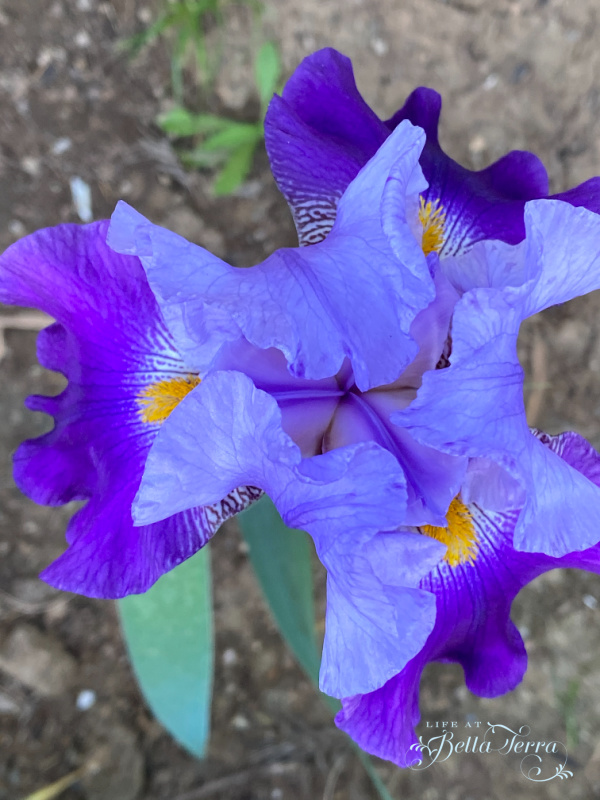
In our USDA planting zone (9b), the best time to divide iris rhizomes is this time of year. Established plants need to be divided every third or fourth year or whenever the clumps become crowded and flowering decreases. This is best done in August after flower stalks have died back. I can honestly say that dividing iris in the summer heat is not a fun thing to do.
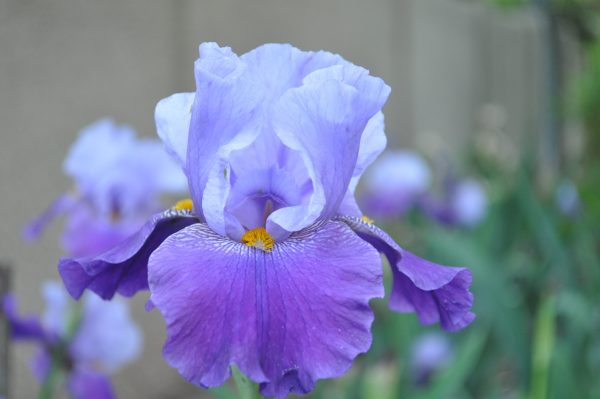
As you know, once you buy a property it is fun to go through the seasons to see what will bloom in your yard. Since our property was a major restoration construction site for 3 years, large portions of the landscaping have been re-designed. However, many plants/trees that were planted by previous owners over the last 100+ years still remain.
An Overgrow Bed of Irises

A section of our landscaping bed nearest the street is chock-a-block full of a smaller white iris. I have no idea who or when these irises were planted. Since we have been living here for 20 years, this iris bed is in dire need of attention. It is a cluttered mess.
Since the original rhizome (the “mother”) will produce several offshoot rhizomes you can only imagine how entangled this planting bed is currently. Dividing them gives them space to grow and flower.
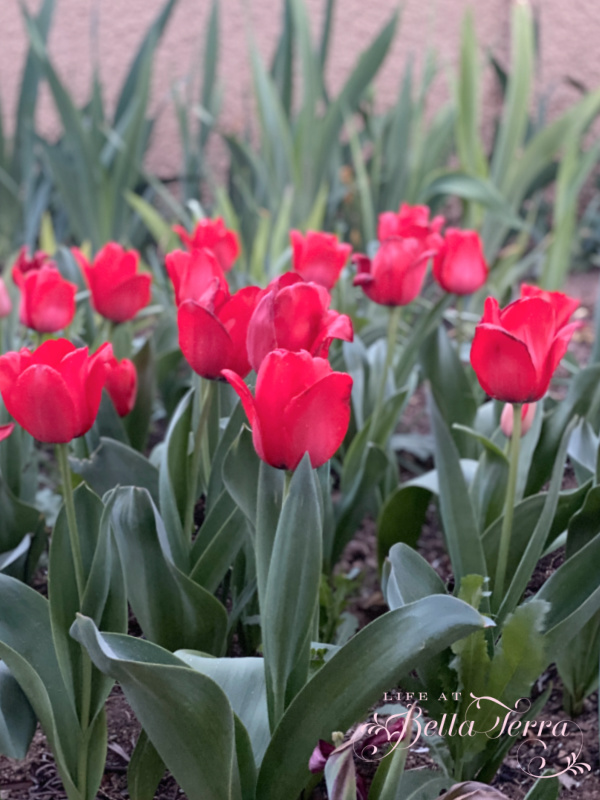
If you are new to my blog, two years ago I did create a separate bulb garden on the south side of our parcel. The hope is to divide these irises and place some of them in the newer bulb garden. To see my bulb garden project, click here.
Tools You Will Need
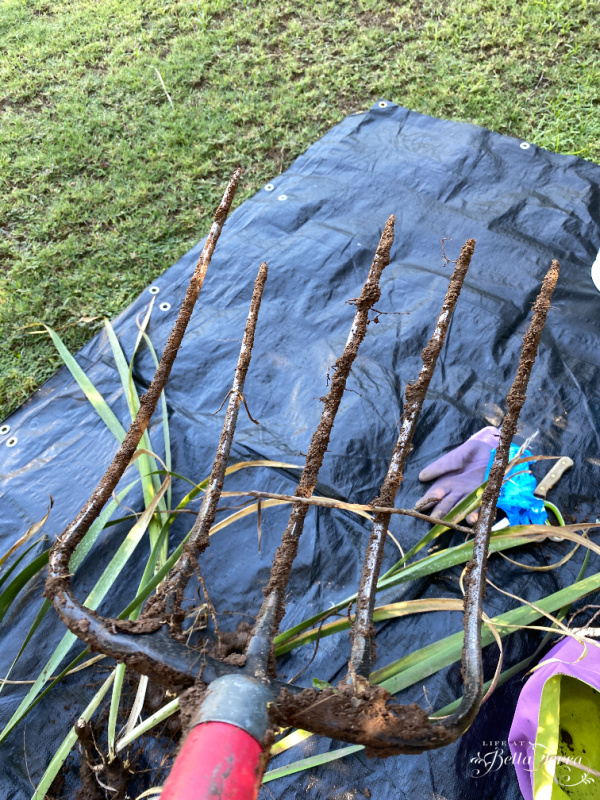
It’s impossible to garden here without a hat, water bottle and since we’ve had so much rain, a mosquito repellent. I place a tarp down so I can sort and separate the rhizomes.
Using a pitchfork to gently lift the rhizomes and roots, I quickly realize that this will be a difficult project. As stated earlier, dividing irises should take place every 3-4 years. Since nothing has been done in the past 20 years, these rhizomes are firmly embedded, so much so, that I bend the tine of the pitchfork.
Parts of the Iris
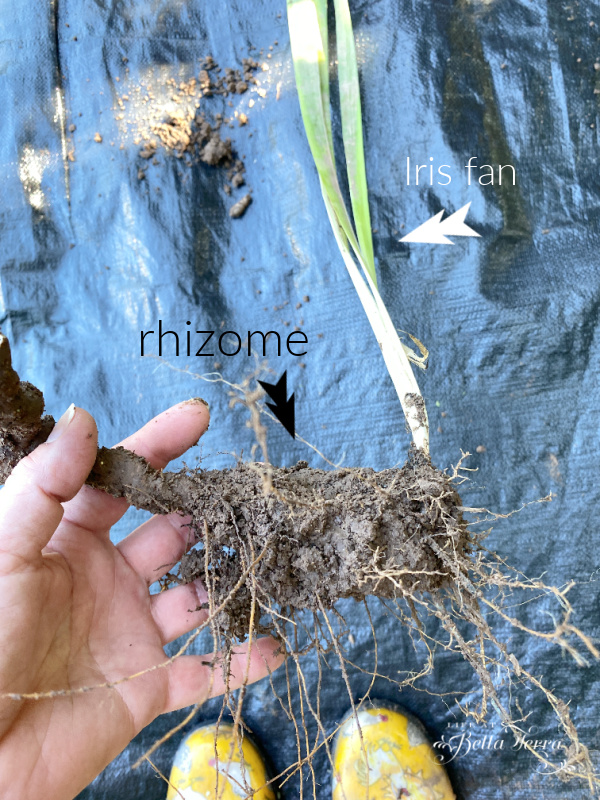
You will quickly see the rhizome protruding from the bottom of the iris fan. The roots hang freely below. In the picture above you can see how long the rhizome has grown.
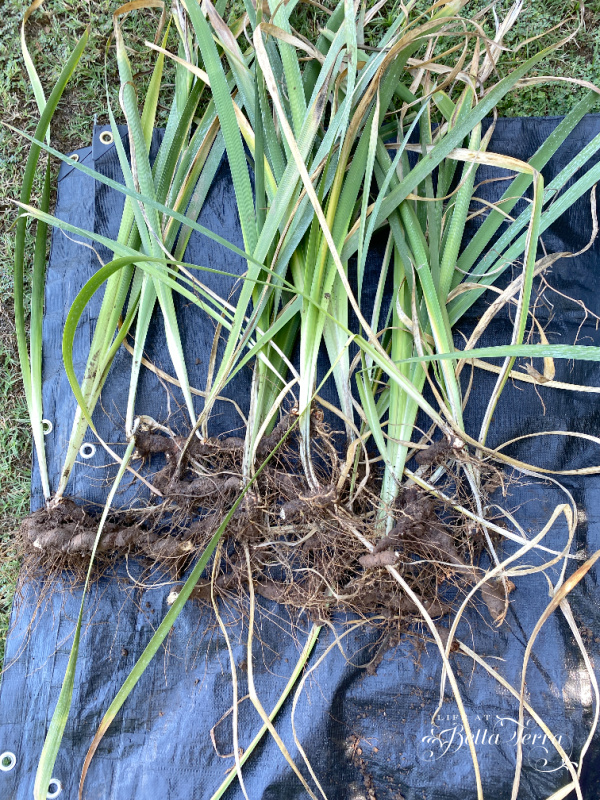
Condition of the Rhizome
After carefully releasing several iris, I am ready to prepare them for replanting. First I check the condition of the rhizome. If any parts are rotted or showing signs of extensive infestation, I will not replant. However, if just the end or tip has decay, you can cut off the bad areas.
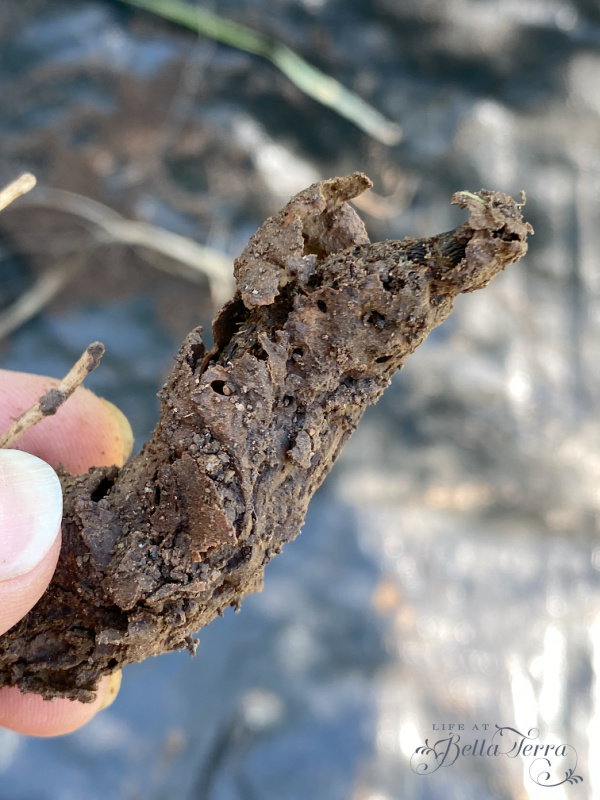
In order to determine the condition of the rhizome, I place them in a bucket of water to wash off the excess dirt. Here I can evaluate the condition, length and hardiness of the rhizome.
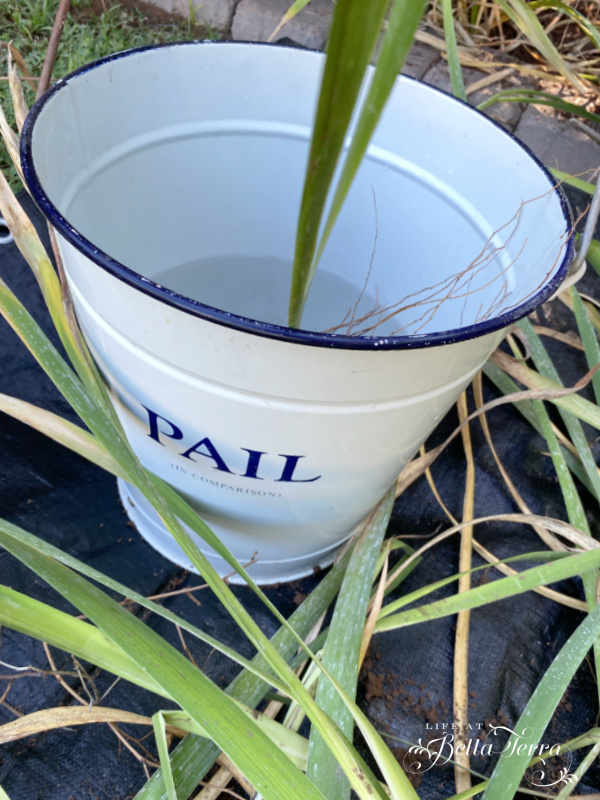
Many of the rhizomes are in big clumps and others are just long and linear. Separate these rhizomes from the mother with a sharp knife and discard of the mother, as it will no longer produce blooms. You can break apart the clumps and trim the rhizome to approximately 3-4 inches, using a sharp, clean knife or garden shears (found here).
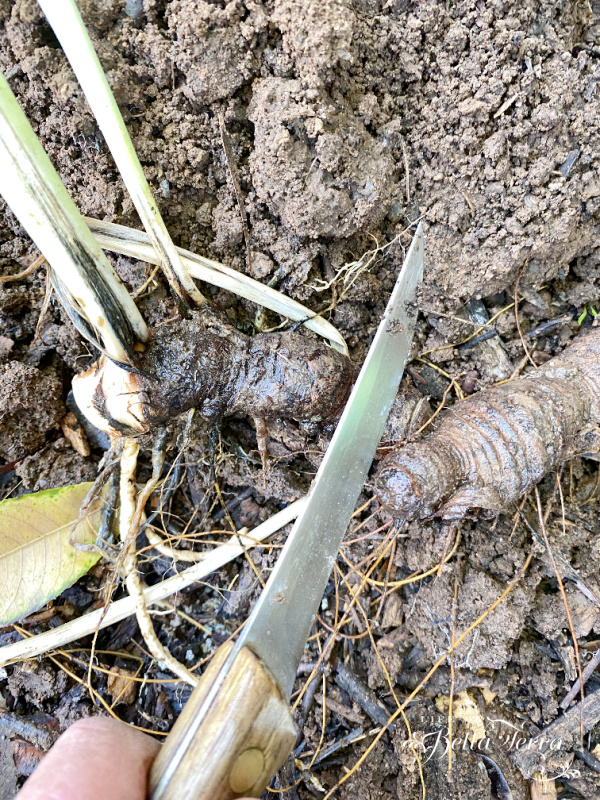
For the rhizomes you decide to keep, cut the leaf fans back so they’re about four to six inches long. This helps the plant focus on growing roots before winter.

Replanting
To plant, dig a shallow hole and create a mound in the middle where the rhizome will sit. Place the rhizome on the mound with the roots in your hole. Cover the roots and then place a thin layer of soil over the rhizome. You want the rhizome itself to sit just below the surface, lightly covered in soil. Push any errant roots under the soil with your finger.
It’s easy to make the mistake of planting irises too deeply. The rhizomes of these plants should be partially exposed to the elements, or thinly covered with soil in hot climates. If they’re buried too deeply, they won’t do well.
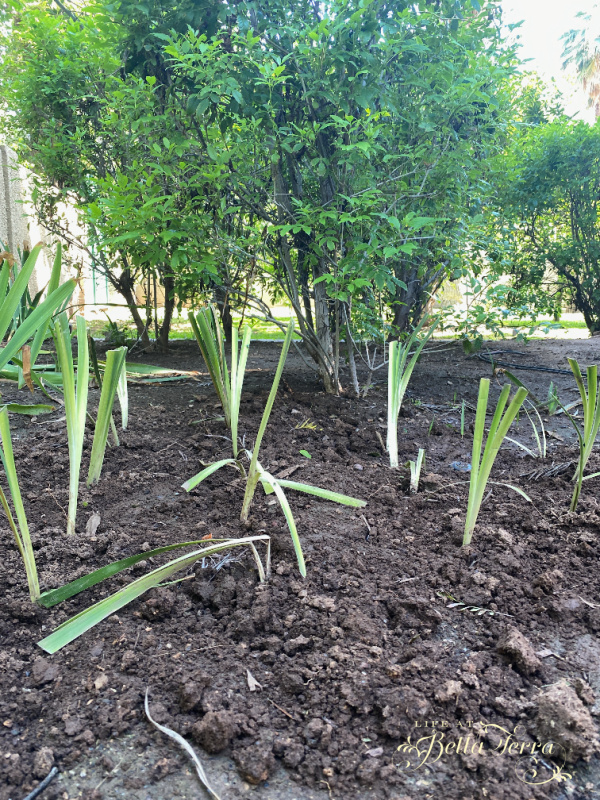
Since the long overdue extraction of the rhizomes is rather difficult, I still have half a bed to go. But several are now clean and freshly planted in the ground. While digging up the rhizomes, I also discover many miscellaneous bulbs. I am not sure if they are freesias or paperwhite narcissus so it will be fun to see what comes up in the Spring.
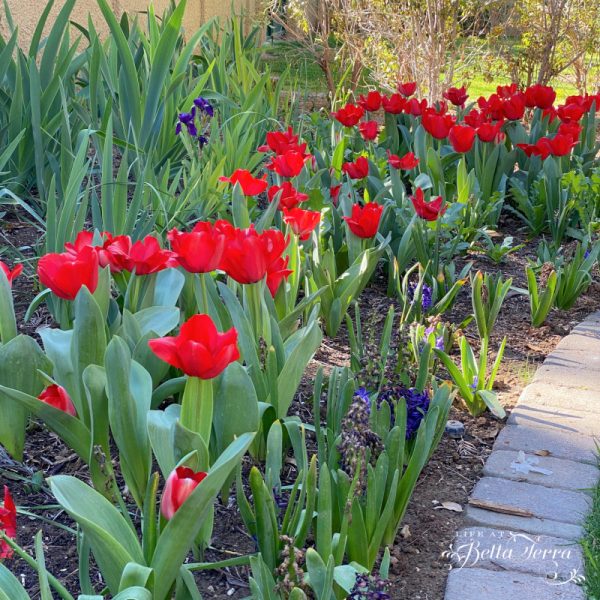
Irises in Phoenix bloom around Easter time. I plan to fertilize all my bulbs and rhizomes in January, February and March. Hopefully I will have an abundant crop of spring blooms to share with you. Check your area to see when it is the ideal time for you to plant and divide irises.
Happy Gardening! Make sure you keep reading to see what my other gardening friends are up to this month. It is such fun to see their gardens in other parts of the country!

I would love for you to follow me on Pinterest. Please share this pin if you enjoy my post!
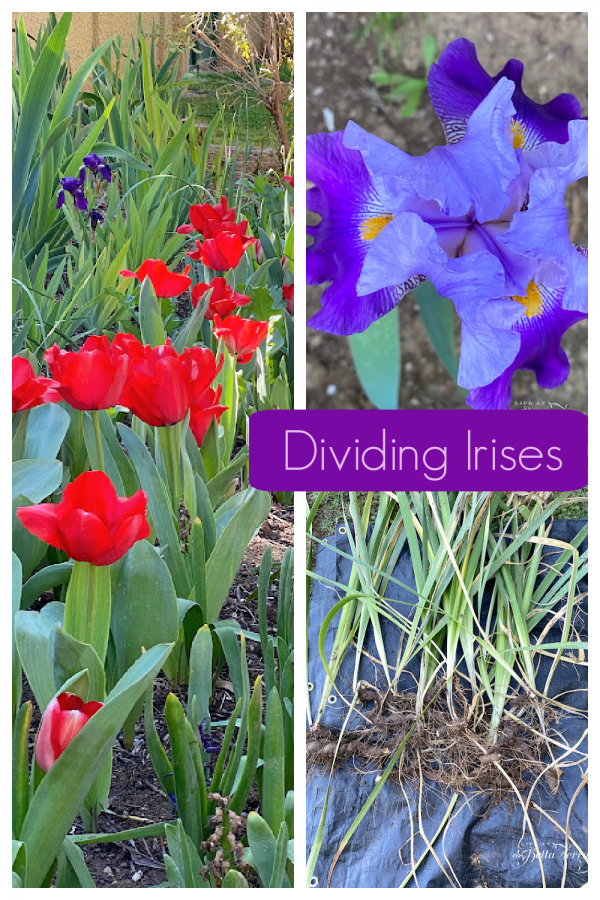
Now Off to the Gardening Blog Hop

Well, since my cutting garden is a bit of a failure, I am excited to read Kim from Shiplap and Shells post about 9 Common Cut Flower Garden Challenges and Solutions. See it here.
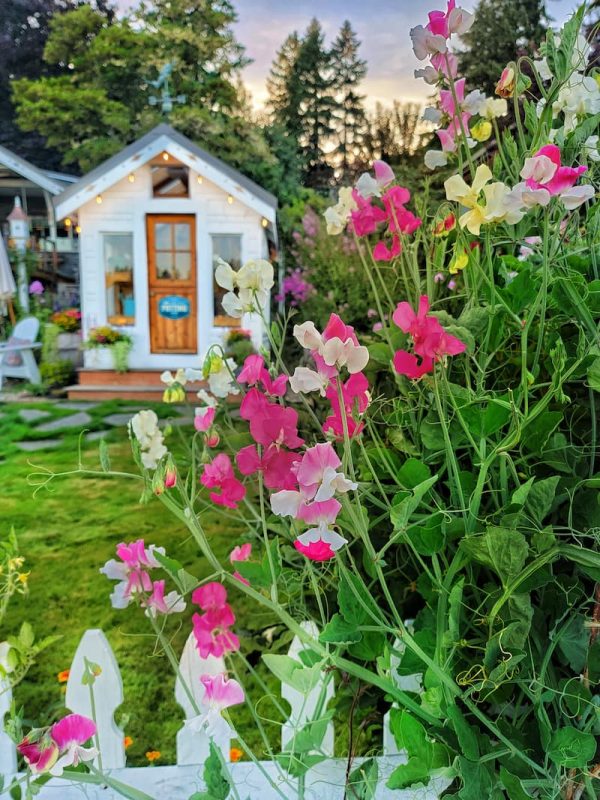
Chas from Chas Crazy Creations is sharing When to Harvest Your Garden Vegetables here.
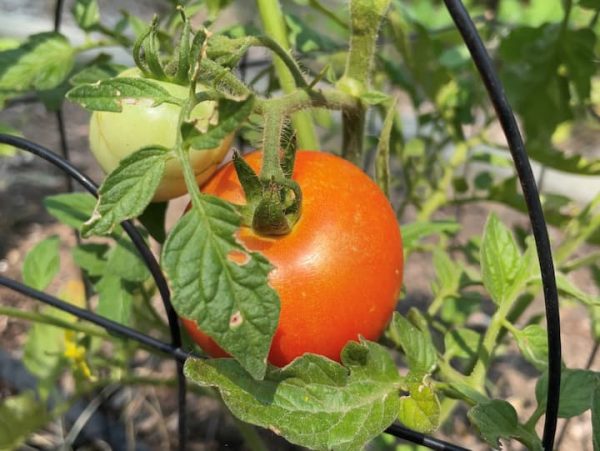
Stacy from Bricks and Blooms is enjoying her flower garden and let’s us peek into Gardening Zone 6a Summer Flowers here.
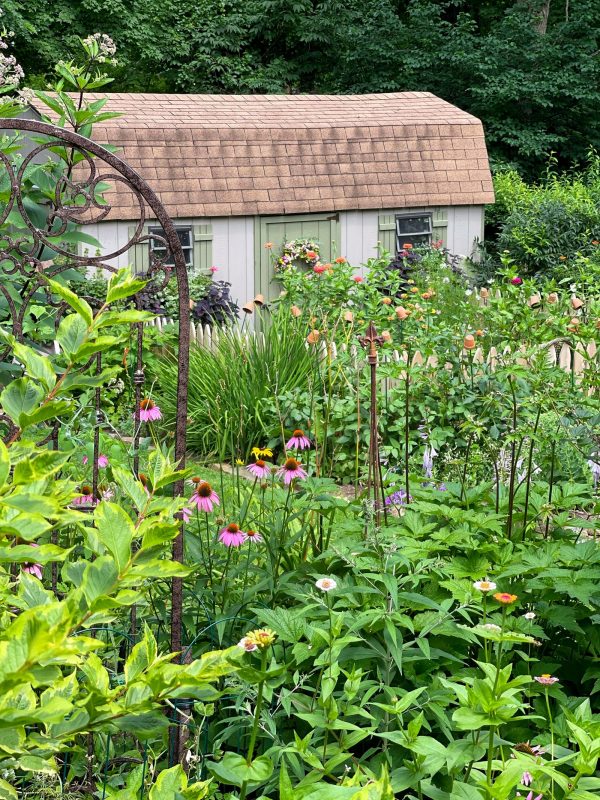
Just a reminder that any words that are italicized bring you to the source. If it is a product on Amazon, please note that I am an Amazon Affiliate. If you purchase something through my website, I receive a small (very small!) stipend, which doesn’t affect the price you pay at all. My goal is to make sourcing the items easy for you. Thank you for your continued support.



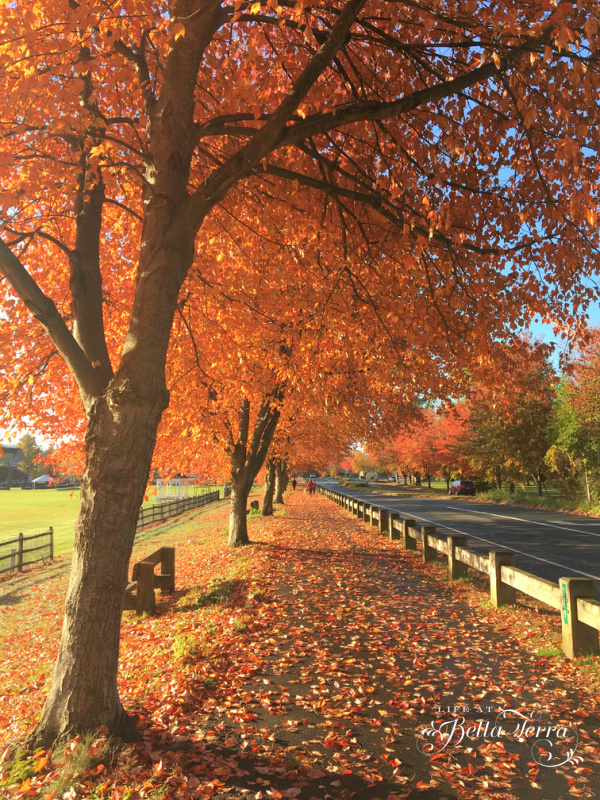



I have divided my irises but I thought they didn’t bloom the first year after planting the divided rhizomes. I followed your instructions except I didn’t fertilize in the winter months. Could not fertilizing have been the problem?
Karen, good question. Iris rhizomes cannot be planted deeply and/or they are getting too much water. Make sure they are in well-drained soil. Keep the planting shallow. If not they tend to rot. Some of our rare irises have stopped blooming too, but I think it’s more our weather here in Phoenix. I don’t know if certain bulbs or rhizomes need so many “freeze” hours, but with our climate warming up I think it is definitely affecting the amount of blooms. The purple bearded iris do the best for me.
I actually thought the newly planted rhizomes. Would not bloom the first year after being planted. I divided my irises and the newly planted ones did not bloom the first year after being planted. I think I followed your instructions. Could it be because I didn’t fertilize? What kind of fertilizer do you use?
The smaller rhizomes may take a year or two to bloom. The large ones generally bloom the first year. I don’t use any special kind of fertilizer-I just buy any that state they are for bulbs. Good luck. When we first planted irises, we had several different varieties and some quite rare. But over time, they have stopped blooming and the purple bearded irises come up every year.
Great tips for dividing Mary. I have an entire patch of them and they are so overwhelming to me. I know I will need to divide them soon, but thought maybe you could come up just to make sure I’m doing it right!
Kim, I would LOVE to come up and help. I imagine doing it in your temperate climate is much more comfortable than doing it here. I still have half a bed to go and I’m groaning about it…It’s much easier to do them every 3-4 years.
Great tips! I need to divide my irises this year – they are out of control!
You must have happy irises if they are growing out of control!
I can’t believe you were doing this in the Phoenix heat. Well, yes, I do believe it, but really, should you have? I know what hard work that was! I hope you took some well deserved time off afterwards in someplace cool and relaxing. I know you will enjoy the fruits of your labor come next spring!
Chloe, it was brutal. I could only stand being out there for a few hours. Easy to get heat exhaustion so I will tackle the rest of the bed early in the morning this coming weekend. It’s just been SO hot here…But I will be happy in the Spring if they bloom again.
Great tips! I want to add irises to my garden.
We bought a bunch of rhizomes when a local iris farm was going out of business. But over time to very rare ones are no longer blooming (not sure why) but our big blue bearded irises are so stunning in the Spring.
I have done this and it’s such a task but well worth the reward of the beautiful flowers. Thank you so much for sharing.